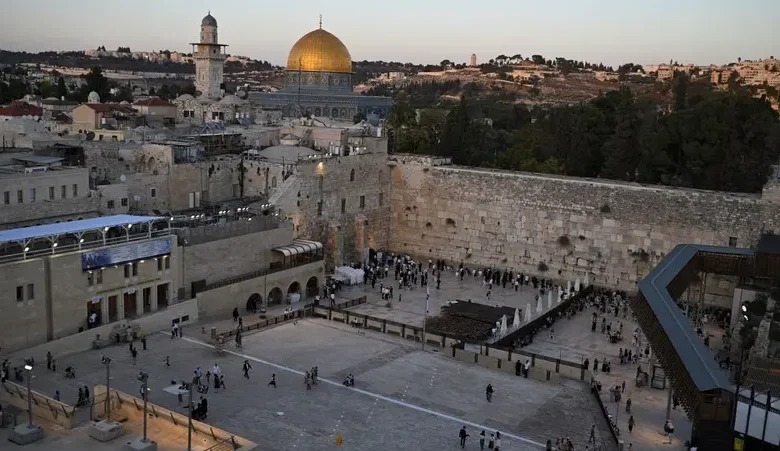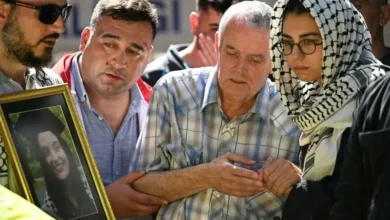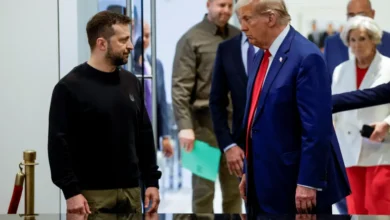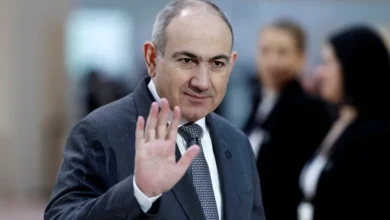Two-state solution to Israeli-Palestinian conflict tested by war

Months of deadly fighting between Israel and Hamas laid bare the gulf between Israeli and Palestinian leaders over the future, testing the credibility of a long-sought two-state solution to their conflict.
Peace brokers have spent decades clinging to the idea that Palestinians and Israelis can live side by side in separate sovereign countries.
But the Israel-Hamas war since October 7 has brought discussions of a potential solution to a breaking point.
Israeli Prime Minister Benjamin Netanyahu last week restated his objection to Palestinian sovereignty, angering foreign allies who insist on the Palestinians’ right to statehood.
Where did the idea come from?
The two-state concept was born in the 1930s supported by Jewish immigrants who settled in British Mandatory Palestine.
In 1947 the United Nations General Assembly adopted a proposal for separate Jewish and Arab states, paving the way for Israel to be established the following year.
Was there opposition?
Some Palestinian and Arab leaders opposed a Jewish state on what they viewed as Arab land, and the issue helped spark a wider revolt in 1936 against British rule in Palestine.
The UN partition plan and the creation of Israel became the trigger for the Arab-Israeli war of 1948-49.
Israel emerged stronger, seizing more territory, while the Palestinian state disappeared even before it was born and Palestinians suffered mass displacement.
In 1964 the Palestine Liberation Organization (PLO) was formed with the aim of establishing a Palestinian state over the entire territory of Mandatory Palestine.
An Arab-Israeli war in 1967 saw Israel seize the Palestinian territories of the West Bank, east Jerusalem and the Gaza Strip.
Israel had annexed east Jerusalem, and successive Israeli government have encouraged Jewish settlements in the Palestinian territories.
Under international law, the Palestinian territories remain occupied, and Israeli settlements in east Jerusalem and the West Bank are illegal.
Was it ever close to happening?
Hope for peace had surged in the early 1990s with the Oslo Accords, struck after secret Israeli-Palestinian talks in the Norwegian capital.
They created a limited degree of Palestinian self-rule, and were intended as an interim measure that would eventually lead to Palestinian statehood, but talks had tapered off.
The international community last made efforts at serious talks in 2013, said Xavier Guignard of Noria Research, a Paris-based think tank.
“Politically we have seen zero effort to make it feasible since then,” he told AFP.
Foreign leaders have warned that the expansion of Israeli settlements threatens the feasibility of a contiguous Palestinian state.
What do leaders say?
The Palestinian Authority, which proceeded from the PLO and recognises Israel, formally supports two states.
Palestinian president Mahmoud Abbas in September called for an international conference on the issue, saying it “may be the last opportunity to salvage the two-state solution.”
In 2017, Hamas for the first time accepted in principle a Palestinian state in the pre-1967 borders, while not recognizing Israel.
Netanyahu has largely opposed Palestinian statehood throughout his political career, while Guignard said an upsurge of nationalist factions in Israeli politics has seen the idea widely dismissed.
What do the people think?
The two-state solution has suffered a dramatic slump in popularity on both sides, opinion polls suggest.
A Pew survey of Jewish Israelis before the current Israel-Hamas war found support had fallen from 46 percent in 2013 to 32 percent last year.
A Gallup survey, also before the war, found support among Palestinians in Gaza and the West Bank had slumped from 59 percent in 2012 to 24 percent last year.
Some Palestinian groups have long preferred the idea of a single state with equal rights for all.
What has changed during the Gaza war?
On the world stage, the Israel-Hamas war has generated new momentum with leaders once again publicly calling for a solution to the conflict.
UN Secretary-General Antonio Guterres said last week it was “unacceptable” to deny Palestinians their right to statehood.
US President Joe Biden has repeatedly called for it and said last week there were “a number of types of two-state solutions”, possibly with a demilitarised Palestinian state.
Top US diplomat Antony Blinken said Abbas had agreed to reforms to potentially reunite Hamas-ruled Gaza and the Israeli-occupied West Bank under the Palestinian Authority.
Saudi Foreign Minister Prince Faisal bin Farhan said last week Riyadh would not pursue talks on recognizing Israel without a ceasefire in Gaza and the creation of a Palestinian state.
EU foreign policy chief Josep Borrell, firmly backing a two-state solution, lashed out at Israeli leaders.
“Which are the other solutions they have in mind? To make all the Palestinians leave? To kill them off?” he said on Monday.
Former Hamas chief Khaled Meshaal recently dismissed a two-state solution as “old commodity” being pushed by the West.
Netanyahu insisted Israel must maintain “security control over all the territory west of the Jordan (river),” an area that includes all of the Palestinian territories.
With the hardline positions taken by the warring sides, analysts like Guignard are less sanguine about the future of a two-state solution.










